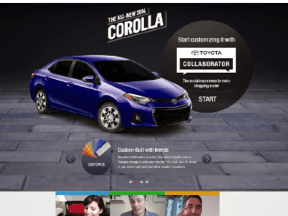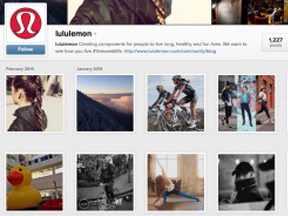Social media sites like Facebook, LinkedIn, and Google+ can be high efficiency platforms that serve as a hub for all your social media engagement activities.
Video and photo sharing sites such as YouTube, Flickr, and Instagram can be repositories to archive content that is distributed through other channels. Blogs can become niche-market penetration tools to reach individual audience segments.
That said, social media should not be viewed as a standalone channel that is separate from other marketing initiatives. Instead, view it as a “multiplier” that integrates with and enhances existing marketing communication strategies.
In other words, rather than create social media campaigns, make all of your marketing campaigns social.
Here are eight ways to integrate social media with other forms of marketing.
1. Create a Twitter Channel for Customer Service
Rather than think of Twitter as a single channel that combines product promotion, brand monitoring, content marketing, and customer interaction, make it one part of your customer service matrix by creating a separate account for the sole purpose of responding to customer queries, feedback and concerns.
This approach, popular among larger companies like Comcast and Network Solutions, is one that smaller businesses can easily emulate.
2. Integrate Email and Social Media
Email and social media compliment each other. Here are four ideas for how to combine them.
- Include social media icons that link to your business social networks in email templates, to make it easy for readers to find you in social media.
- Add social sharing buttons to email templates. That way, if someone likes your campaign all they have to do is click a button to share it with friends and followers.
- Post email campaigns to social media. Some email marketing platforms include the ability to automate this process.
- Convert social followers to email contacts. Email marketing platforms like MailChimp, Constant Contact, Mad Mimi, and iContact offer signup forms designed for use on Facebook Pages.
3. Strengthen SEO by Coupling Good Content with Social Media
This is where Google+ can be an asset. In “SEO: 5 Reasons not to Ignore Google+,” Contributing Editor Jill Kocher explained that sharing content on Google+ has a causal relationship with higher Google rankings, and Google’s search crawlers use Google+ as a source of fresh content.
4. Target Journalists Using Social Media
Journalists look for credible sources when conducting research for articles. One place they look is social media.
Instead of hoping they will find you, follow them, and then comment on and share their content. More importantly, produce content of your own that establishes your thought leadership and expertise, which you syndicate via social media.
5. Integrate Social with Traditional Marketing with Campaign Hashtags
This is a common advertising practice among larger brands, and for good reason. It provides a filtering mechanism through which prospective customers identify themselves based on topics of shared interest.
For example, in 2012, Nike conducted a hashtag campaign using Pinterest, Twitter, and Instagram that asked fans to share how they planned to “#makeitcount” that year. The company advertised via print and digital media to focus attention around it. So successful was the campaign that Nike extended it into 2013.

Nike created a marketing campaign that featured the hashtag #makeitcount on social networks.
Most social networks now incorporate hashtags, so it’s an easy way to get your message in front of prospects without the need for overt marketing tactics.
6. Carry Over other Types of Marketing Campaigns into Social Media
Ecommerce merchants often use contests, discounts, special offers, and seasonal promotions in email and other types of marketing campaigns. It makes sense to include social media in the mix.
This can be accomplished in a variety of ways:
- Use Facebook, Twitter, and LinkedIn promoted posts to reach a larger audience.
- Create a Facebook Page app or LinkedIn Showcase Page to call extra attention to the promotion.
- Feature contest winners on social networks, and encourage them to share the mention with their friends and followers.
- Create hashtags that support contests and promotions.
7. Use Customer Ratings and Reviews into your Website
Many ecommerce platforms come with customer rating and review functionality built in. For those that don’t, many third-party software applications are available, which can be integrated into product pages using a snippet of JavaScript or HTML code.
8. Syndicate Existing Content to Social Networks
Your existing content remain only on your website. Instead, place it on social and content networks where it can be found more easily. Put PowerPoint decks on Slideshare, videos on YouTube, photos on Flickr, documents on Scribd, and blog posts on LinkedIn, Twitter, and Google+.





